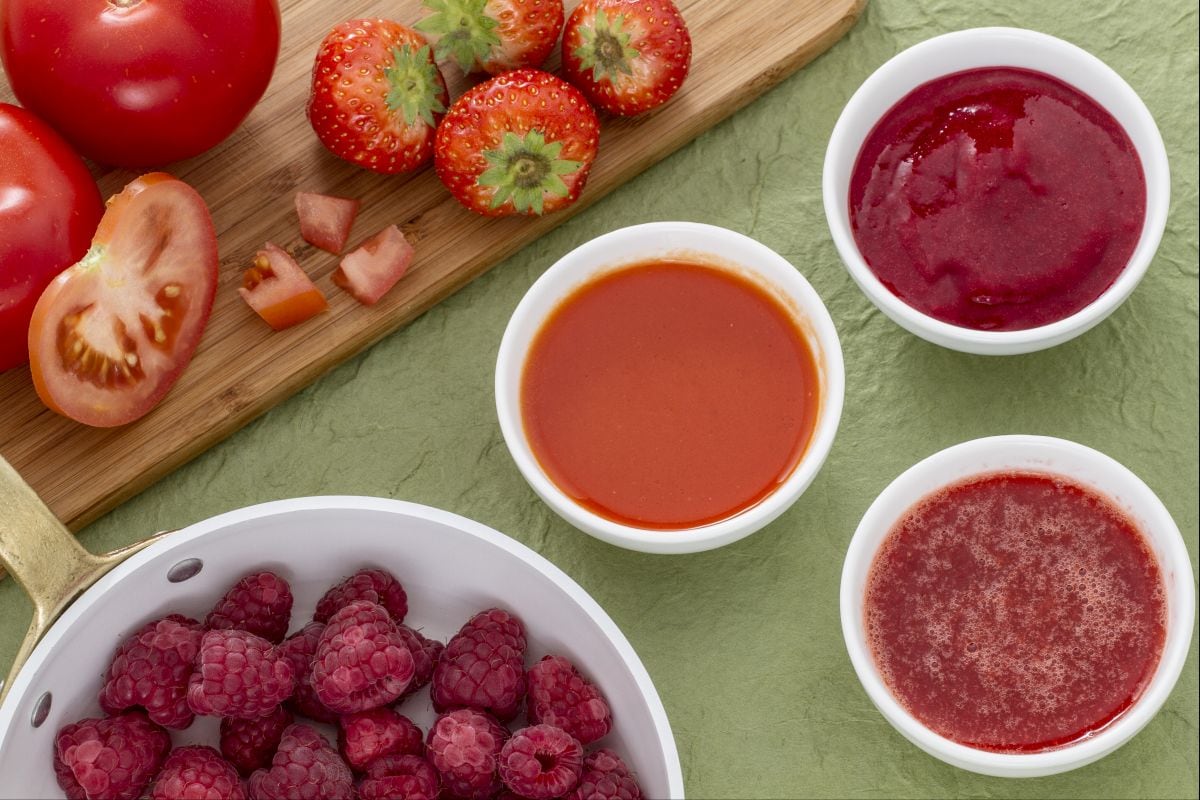Coconut panna cotta with raspberry coulis
- Easy
- 29 min
- Kcal 336

So here's the thing, coulis is one of those sauces that pops up everywhere in French cooking. And look, it’s super simple. People really love how it adds that extra kick to all sorts of dishes. Seriously, whether you’re putting together a fancy dessert or just want to make your veggies more interesting, knowing come preparare la coulis is useful. Really useful.
Thing is, it works with both fruit and veggies. So if you’ve got some berries sitting around, you can whip up a ricetta coulis di frutta that’s fresh and tangy—perfect for drizzling over cakes or even ice cream. Pretty much a game-changer. Or, if you’re in the mood for something savory, veggie coulis pairs well with roasted meats or grilled vegetables. You can blend everything raw and strain it, or do a quick cook for a smoother, deeper flavor. And here's the deal: you end up with a silky, smooth sauce that’s more versatile than you’d think at first glance.
Plenty of desserts in France use coulis. Cheesecake? Panna cotta? Yeah, both love it. A sweet fruit sauce can really really bring out the best in those creamy flavors. For a quick coulis di fragole fatta in casa, you just need ripe strawberries and maybe a little sugar—mash, blend, strain. Done. If raspberries are more your thing, there’s always the popular coulis di lamponi ricetta, which gives a bright, slightly tart kick that’s awesome with chocolate desserts. And the sauce? You know, it’s pretty much perfect.
People who want to skip the stove can go for a coulis di frutta senza cottura—it’s all about letting the natural flavors shine, so the sauce stays fresh and vivid. Really, coulis isn’t just a fancy chef trick; it’s a practical salsa coulis per dolci or even for savory dishes. And it only takes a few minutes to make. If you’re looking for a fast topping di frutta per cheesecake or a fun way to use summer produce, coulis is a super moist and colorful option that makes food look and taste way way better.
You might also like:

CLASSIC COULIS To prepare the fruit coulis, let the raspberries or other fruit soften in a non-stick pan 1 over low heat for 2-3 minutes or until the fruit has released all its water (the amount of water will depend on the type of fruit). Add the powdered sugar, the strained lemon juice, and mix with a whisk until everything is well combined, then let it cook for another minute over low heat 2. Strain the obtained mixture with a sieve 3 to remove any seeds: press well with the back of a spoon and collect the sauce in a small bowl. The fruit coulis is ready: we recommend using it to make an ice cream or spoon dessert more delicious!

RAW COULIS If you wish, you can also make the coulis raw, using soft-pulp fruit like kiwis, raspberries, or well-ripened strawberries. After thoroughly washing the fruit (in this case the strawberries), blend it with a mixer until you get a creamy consistency 1, then squeeze half a lemon 2 and add two teaspoons of juice to the puree; this will help prevent the pulp from browning. Continue blending until you get a homogeneous puree 3,

then strain everything with a sieve, pressing the pulp well with the back of a spoon to remove any seeds 4. Now add the powdered sugar 5, until you get the desired consistency, and mix well using a whisk. If you don't want to strain the fruit, you can use a food mill directly instead of the blender or mixer 6; after completing this step, add the two tablespoons of lemon juice and powdered sugar to the obtained mixture. The raw fruit coulis is ready to be used!

To prepare the vegetable coulis, you can use the vegetables you prefer; tomatoes, peppers, and zucchini are recommended because they are more watery: in our case, we chose to use tomatoes. Take the tomatoes, wash them very well, and cut them into cubes 1. Place them in a non-stick pan with a drizzle of oil, then let them soften over low heat until they have released all their vegetative water 2. At this point, turn off the heat and strain the mixture with a sieve to remove the seeds and skins 3,

season to taste with salt and pepper 4, drizzle with a little extra virgin olive oil raw 5, and mix everything well using a whisk. The vegetable coulis is ready to be used: we recommend serving it with meat or vegetable dishes!